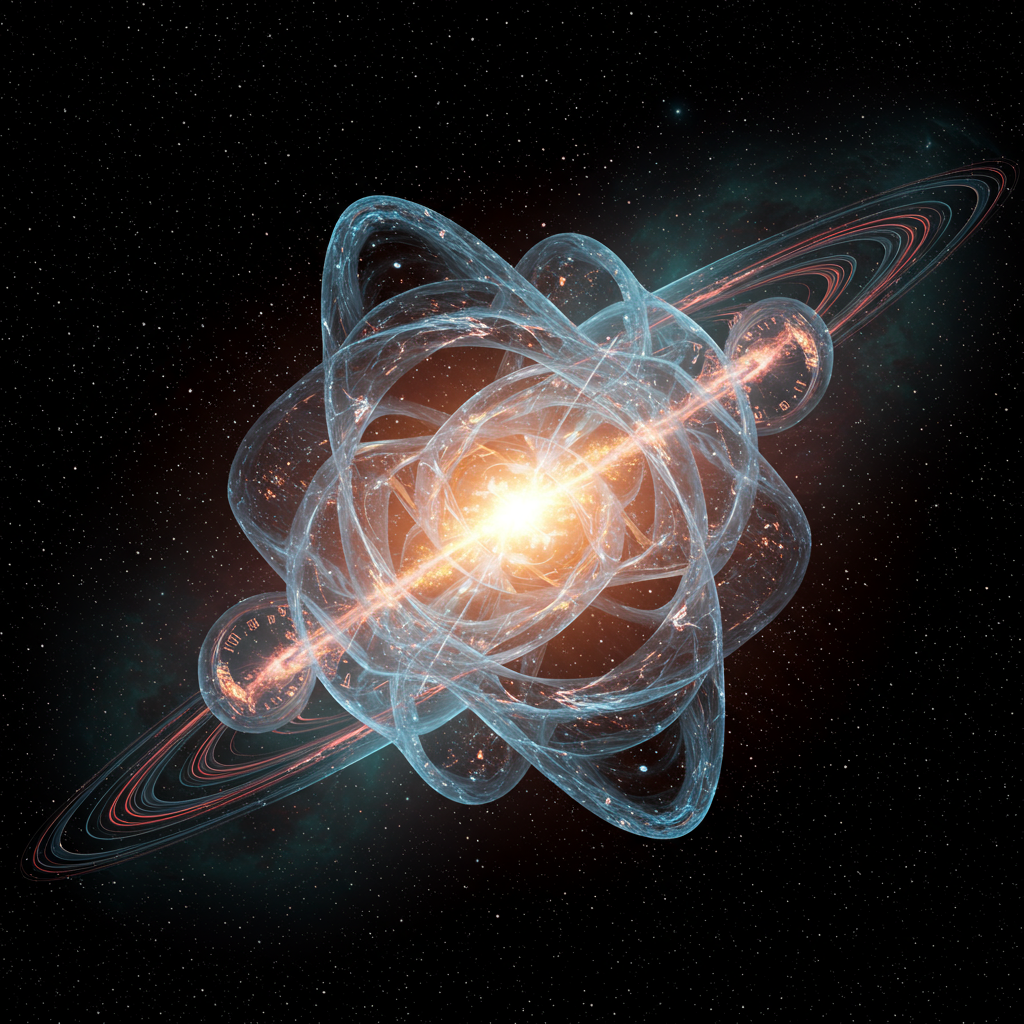SCIENCE
Challenging Spacetime: Could the Universe Be Built on Three Dimensions of Time?
For generations, physics has held a fundamental belief: the universe is built upon four dimensions – three of space and one of time, collectively known as spacetime. This framework underlies our understanding of everything from gravity to the motion of particles. But what if this deeply ingrained idea is wrong?
A groundbreaking new theory is proposing a radical shift in perspective, suggesting that time itself, not spacetime, is the primary fabric of the cosmos. This theory posits that the universe fundamentally exists on three dimensions of time, with space emerging as a secondary effect of temporal interactions.
This bold challenge comes from Dr. Gunther Kletetschka, a physicist at the University of Alaska Fairbanks. His research directly confronts the notion that space and time are equally fundamental aspects of reality.
A Multidimensional View of Time
Instead of a single, linear progression, Kletetschka proposes time as a multidimensional framework with three independent directions. He suggests that “viewing time as three-dimensional can naturally resolve multiple physics puzzles through a single coherent mathematical framework.”
This concept aligns with a growing trend in theoretical physics exploring the idea that seemingly fundamental concepts like spacetime or gravity might actually be emergent phenomena. That is, they aren’t fundamental building blocks but rather arise from deeper, more basic interactions or structures at a more fundamental quantum level. For example, some theories suggest gravity isn’t a fundamental force but emerges from quantum interactions, while others propose that spacetime itself, or even time, could emerge from quantum entanglement or transactional processes.
Weaving a New Fabric: How 3D Time Could Work
To grasp Kletetschka’s proposal, imagine replacing the standard four-dimensional spacetime model with a setup where time has three axes and space also has three. However, unlike the conventional view, this new theory places time at the core. Space is no longer the bedrock; it’s more like a consequence, a property that emerges depending on how time behaves across different scales and orientations.
Kletetschka developed this mathematical model by asking a simple yet profound question: If space has three dimensions, why couldn’t time? Within this framework, particles and forces interact within a three-dimensional temporal structure.
This approach offers a fresh perspective on fundamental physics, which has long grappled with challenges like the incompatibility of quantum mechanics and general relativity – often referred to as the “problem of time” in physics. Exploring theories where time or spacetime emerge from a more fundamental, potentially non-spatiotemporal layer is one avenue physicists are pursuing to bridge this divide.
Explaining Reality: Matching Theory to Experiment
A significant strength of Kletetschka’s 3D time framework is its ability to connect with real-world measurements. When applied to fundamental particles, the model can reproduce some of their known properties, crucially their masses.
The Standard Model of particle physics, while highly successful, doesn’t fully explain why particles like electrons, muons, and quarks have the specific masses they do. Kletetschka’s framework generates values that closely match these observed masses. This indicates the theory is not just an abstract mathematical idea but offers concrete explanations for observed physical quantities.
“The three-dimensional time framework represents a significant advance in fundamental physics, providing a unified description of nature while making testable predictions,” Kletetschka stated. Unlike some earlier abstract proposals for extra time dimensions that remained purely theoretical and faced logical issues like causal contradictions, this theory maintains a consistent flow of events even within multiple temporal directions. Its connection to experimental data distinguishes it from previous, less constrained models.
Implications and the Future of Physics
This research offers exciting possibilities for the future of theoretical physics. By providing a mathematical structure that aligns with real-world measurements and addresses fundamental questions about the nature of reality, it could potentially offer a new framework for integrating quantum mechanics with gravity – one of the most sought-after goals in modern physics.
The standard cosmological model also faces limitations, including the singularity predicted at the Big Bang and the need for hypothetical dark matter and dark energy to explain cosmic observations. Theories like Kletetschka’s, which propose fundamentally different structures for the universe or explore alternatives like the universe emerging from a black hole bounce or having a complex spatial topology, represent vital efforts to move beyond these challenges.
The next steps involve refining the mathematical model and identifying specific experiments, likely in particle physics or cosmology, that could definitively test the theory’s predictions. If the framework proves valid under further scrutiny, it could profoundly reshape our understanding of time, space, and the very foundation of our universe.




